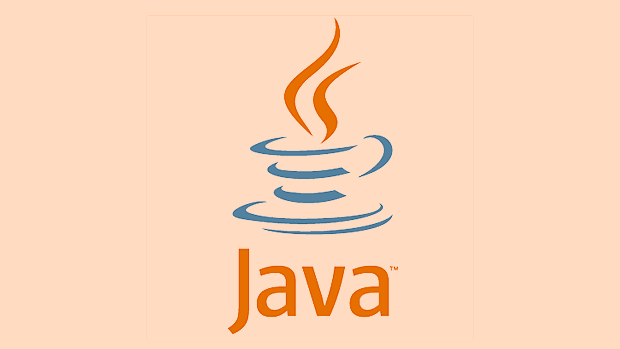Project Loom revolutionizes Java concurrency by introducing virtual threads, lightweight JVM-managed threads that enable scalable, simple, and synchronous-style code without the overhead of traditional OS threads. 1. Virtual threads drastically reduce resource consumption and scheduling bottlenecks, allowing tens of thousands of threads to run efficiently on few platform threads. 2. Developers can now write straightforward blocking code for I/O-bound tasks, eliminating the complexity of reactive programming in many cases. 3. The solution is backward compatible, with existing concurrency constructs continuing to work while frameworks like Spring Boot add native support. 4. Challenges include careful use of ThreadLocal due to potential memory pressure, avoiding long-running CPU tasks that block platform threads, and adapting monitoring tools to handle large numbers of virtual threads. Ultimately, Project Loom shifts Java concurrency toward simplicity and scalability, making high-throughput applications easier to build and maintain.

Project Loom is one of the most anticipated changes to Java in recent years, especially when it comes to concurrency. It aims to simplify the way developers write concurrent and scalable applications—without sacrificing performance. To understand its impact, we need to look at how Java handled concurrency before Loom, what Loom introduces, and why it matters.

What Was Wrong with Traditional Java Threading?
Before Loom, Java relied on platform threads (also known as OS threads) managed by the JVM. Each thread maps 1:1 to an OS thread, which is powerful but expensive in terms of memory and scheduling overhead.
- A single thread can consume 1MB or more of stack space by default.
- The OS scheduler becomes a bottleneck when handling tens of thousands of threads.
- As a result, developers turned to thread pools (e.g.,
ExecutorService) and asynchronous, non-blocking code (e.g.,CompletableFuture, reactive frameworks like Project Reactor or RxJava) to scale.
While effective, this approach leads to complex, hard-to-read, and harder-to-debug code. Writing asynchronous logic often means chaining callbacks or dealing with reactive types, which obscures the original intent of the program.

Enter Project Loom: Virtual Threads
Project Loom introduces virtual threads—lightweight threads managed by the JVM, not the OS.
- Thousands (even millions) of virtual threads can run on a small number of platform threads.
- They are cheap to create and destroy, with minimal memory footprint.
- Most importantly, they allow developers to write simple, synchronous-style code that scales like asynchronous code.
Here’s a simple example:

try (var executor = Executors.newVirtualThreadPerTaskExecutor()) {
IntStream.range(0, 10_000).forEach(i -> {
executor.submit(() -> {
Thread.sleep(1000);
System.out.println("Task " i " done");
return null;
});
});
}This spawns 10,000 virtual threads effortlessly. With traditional threads, this would likely crash or severely degrade performance.
The Real Impact: Simplicity and Scalability
1. Easier-to-Write Concurrent Code
With virtual threads, you no longer need to use complex reactive patterns just to avoid blocking. You can write code that looks straightforward:
void handleRequest() {
var data1 = fetchFromDatabase(); // blocking call
var data2 = callExternalApi(); // blocking call
respond(data1 data2);
}Even if you have 10,000 concurrent requests, each using a virtual thread, the application remains scalable. No Mono, Flux, or thenCompose() required.
2. Better Utilization of Hardware
Virtual threads reduce context switching overhead and allow better use of CPU cores. The JVM schedules virtual threads onto platform threads efficiently, similar to how Go uses goroutines.
3. Backward Compatibility and Gradual Adoption
You don’t need to rewrite your app. Existing code using ExecutorService, synchronized, or ThreadLocal continues to work. You can opt into virtual threads where it makes sense.
Frameworks like Spring Boot (6.0 ) and Tomcat are already adding support, so migrating is becoming seamless.
4. Reduced Need for Complex Concurrency Tooling
While tools like CompletableFuture and reactive streams still have their place (e.g., event-driven systems), many use cases—especially I/O-bound services like web servers—can now rely on simpler models.
Things to Watch Out For
-
Thread-Local Storage: With potentially millions of virtual threads, misusing
ThreadLocalcan lead to memory issues. Consider alternatives like scoped values (a new Loom feature). -
Synchronization:
synchronizedblocks still work, but if a virtual thread blocks a platform thread for too long (e.g., CPU-heavy work), it can limit scalability. - Monitoring and Debugging: Tools need to adapt. Traditional thread dumps may become overwhelming with thousands of virtual threads.
Conclusion
Project Loom doesn’t just add a new feature—it shifts the default mindset for writing concurrent Java applications. Instead of optimizing for thread scarcity, we can now write simple, readable, and scalable code by default.
It won’t eliminate reactive programming, but it makes the simple things simple again. For most server-side Java applications—especially those doing I/O—the impact is transformative.
Basically, Loom brings Java concurrency into the modern era, making high-throughput systems easier to build and maintain. And that’s a big deal.
The above is the detailed content of The Impact of Project Loom on Java Concurrency. For more information, please follow other related articles on the PHP Chinese website!

Hot AI Tools

Undress AI Tool
Undress images for free

Undresser.AI Undress
AI-powered app for creating realistic nude photos

AI Clothes Remover
Online AI tool for removing clothes from photos.

Clothoff.io
AI clothes remover

Video Face Swap
Swap faces in any video effortlessly with our completely free AI face swap tool!

Hot Article

Hot Tools

Notepad++7.3.1
Easy-to-use and free code editor

SublimeText3 Chinese version
Chinese version, very easy to use

Zend Studio 13.0.1
Powerful PHP integrated development environment

Dreamweaver CS6
Visual web development tools

SublimeText3 Mac version
God-level code editing software (SublimeText3)

Hot Topics
 What is the `enum` type in Java?
Jul 02, 2025 am 01:31 AM
What is the `enum` type in Java?
Jul 02, 2025 am 01:31 AM
Enums in Java are special classes that represent fixed number of constant values. 1. Use the enum keyword definition; 2. Each enum value is a public static final instance of the enum type; 3. It can include fields, constructors and methods to add behavior to each constant; 4. It can be used in switch statements, supports direct comparison, and provides built-in methods such as name(), ordinal(), values() and valueOf(); 5. Enumeration can improve the type safety, readability and flexibility of the code, and is suitable for limited collection scenarios such as status codes, colors or week.
 What is the interface segregation principle?
Jul 02, 2025 am 01:24 AM
What is the interface segregation principle?
Jul 02, 2025 am 01:24 AM
Interface Isolation Principle (ISP) requires that clients not rely on unused interfaces. The core is to replace large and complete interfaces with multiple small and refined interfaces. Violations of this principle include: an unimplemented exception was thrown when the class implements an interface, a large number of invalid methods are implemented, and irrelevant functions are forcibly classified into the same interface. Application methods include: dividing interfaces according to common methods, using split interfaces according to clients, and using combinations instead of multi-interface implementations if necessary. For example, split the Machine interfaces containing printing, scanning, and fax methods into Printer, Scanner, and FaxMachine. Rules can be relaxed appropriately when using all methods on small projects or all clients.
 Asynchronous Programming Techniques in Modern Java
Jul 07, 2025 am 02:24 AM
Asynchronous Programming Techniques in Modern Java
Jul 07, 2025 am 02:24 AM
Java supports asynchronous programming including the use of CompletableFuture, responsive streams (such as ProjectReactor), and virtual threads in Java19. 1.CompletableFuture improves code readability and maintenance through chain calls, and supports task orchestration and exception handling; 2. ProjectReactor provides Mono and Flux types to implement responsive programming, with backpressure mechanism and rich operators; 3. Virtual threads reduce concurrency costs, are suitable for I/O-intensive tasks, and are lighter and easier to expand than traditional platform threads. Each method has applicable scenarios, and appropriate tools should be selected according to your needs and mixed models should be avoided to maintain simplicity
 Differences Between Callable and Runnable in Java
Jul 04, 2025 am 02:50 AM
Differences Between Callable and Runnable in Java
Jul 04, 2025 am 02:50 AM
There are three main differences between Callable and Runnable in Java. First, the callable method can return the result, suitable for tasks that need to return values, such as Callable; while the run() method of Runnable has no return value, suitable for tasks that do not need to return, such as logging. Second, Callable allows to throw checked exceptions to facilitate error transmission; while Runnable must handle exceptions internally. Third, Runnable can be directly passed to Thread or ExecutorService, while Callable can only be submitted to ExecutorService and returns the Future object to
 Best Practices for Using Enums in Java
Jul 07, 2025 am 02:35 AM
Best Practices for Using Enums in Java
Jul 07, 2025 am 02:35 AM
In Java, enums are suitable for representing fixed constant sets. Best practices include: 1. Use enum to represent fixed state or options to improve type safety and readability; 2. Add properties and methods to enums to enhance flexibility, such as defining fields, constructors, helper methods, etc.; 3. Use EnumMap and EnumSet to improve performance and type safety because they are more efficient based on arrays; 4. Avoid abuse of enums, such as dynamic values, frequent changes or complex logic scenarios, which should be replaced by other methods. Correct use of enum can improve code quality and reduce errors, but you need to pay attention to its applicable boundaries.
 Understanding Java NIO and Its Advantages
Jul 08, 2025 am 02:55 AM
Understanding Java NIO and Its Advantages
Jul 08, 2025 am 02:55 AM
JavaNIO is a new IOAPI introduced by Java 1.4. 1) is aimed at buffers and channels, 2) contains Buffer, Channel and Selector core components, 3) supports non-blocking mode, and 4) handles concurrent connections more efficiently than traditional IO. Its advantages are reflected in: 1) Non-blocking IO reduces thread overhead, 2) Buffer improves data transmission efficiency, 3) Selector realizes multiplexing, and 4) Memory mapping speeds up file reading and writing. Note when using: 1) The flip/clear operation of the Buffer is easy to be confused, 2) Incomplete data needs to be processed manually without blocking, 3) Selector registration must be canceled in time, 4) NIO is not suitable for all scenarios.
 Exploring Different Synchronization Mechanisms in Java
Jul 04, 2025 am 02:53 AM
Exploring Different Synchronization Mechanisms in Java
Jul 04, 2025 am 02:53 AM
Javaprovidesmultiplesynchronizationtoolsforthreadsafety.1.synchronizedblocksensuremutualexclusionbylockingmethodsorspecificcodesections.2.ReentrantLockoffersadvancedcontrol,includingtryLockandfairnesspolicies.3.Conditionvariablesallowthreadstowaitfor
 How Java ClassLoaders Work Internally
Jul 06, 2025 am 02:53 AM
How Java ClassLoaders Work Internally
Jul 06, 2025 am 02:53 AM
Java's class loading mechanism is implemented through ClassLoader, and its core workflow is divided into three stages: loading, linking and initialization. During the loading phase, ClassLoader dynamically reads the bytecode of the class and creates Class objects; links include verifying the correctness of the class, allocating memory to static variables, and parsing symbol references; initialization performs static code blocks and static variable assignments. Class loading adopts the parent delegation model, and prioritizes the parent class loader to find classes, and try Bootstrap, Extension, and ApplicationClassLoader in turn to ensure that the core class library is safe and avoids duplicate loading. Developers can customize ClassLoader, such as URLClassL






